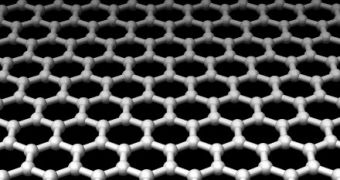Graphene really seems to be setting itself up as the eventual replacement for silicon, especially now that IBM is revealed to have managed the creation of a transistor much faster than any created so far.
Graphene is a single layer of carbon arranges in hexagons and has, for quite some time, been tested upon.
The goal is to use it in the creation of semiconductors, as a substitute for silicon, although the research efforts are still a way off from practical implementation.
Nevertheless, advancements seem to be made on a more or less regular basis, sometimes even more often that one would expect.
Just recently it was discovered that graphene transistors can actually cool themselves, meaning that they will contribute to energy efficiency not just through their own low power draw, but also through not needing much extra, active cooling, if any.
Now, yet another research accomplishment has been reported, one that IBM is behind.
Apparently, the company was able to make a transistor that can execute 155 billion cycles per second, a rate that is 50% beyond that of any previous experimental transistors.
This is quite the progress, considering that electrons naturally move faster on graphene than on conventional transistors anyway.
What these solutions lack (and makes them unsuited for PCs for now) is the on-off ratio needed for digital switching.
Either way, 155 GHz is quite the performance considering that a 100 GHz one was demonstrated way back in 2010 (last year).
High-performance RF (radio frequency) transistors are one of the possible practical applications for graphene, since it can process analog signals very well.
It is also implied that it shouldn't take too long for high-performance transistors to start being commercially products, at low costs, using standard semiconductor manufacturing processes. Just how long is “not too long” continues to remain unclear, however.

 14 DAY TRIAL //
14 DAY TRIAL //